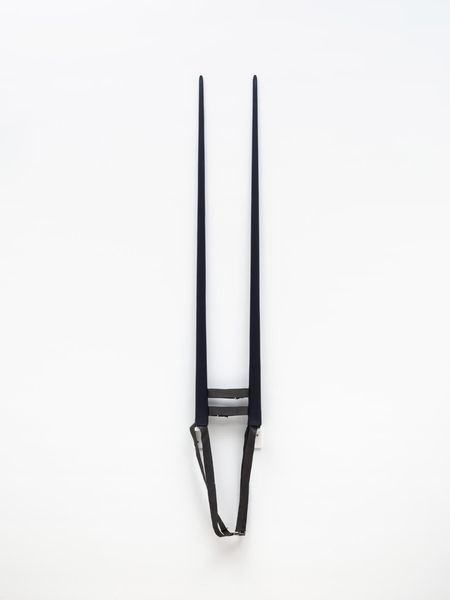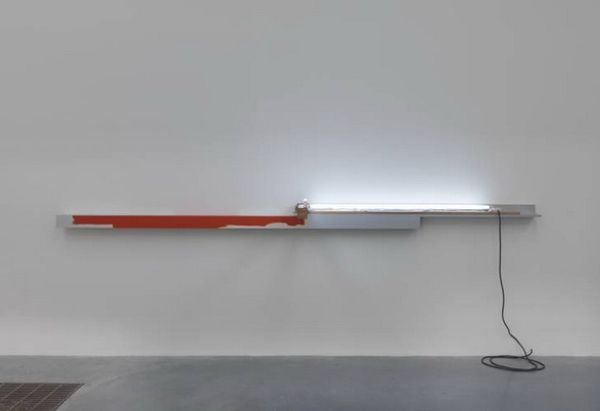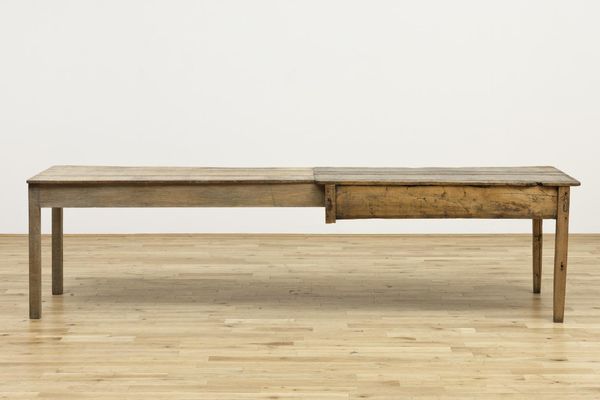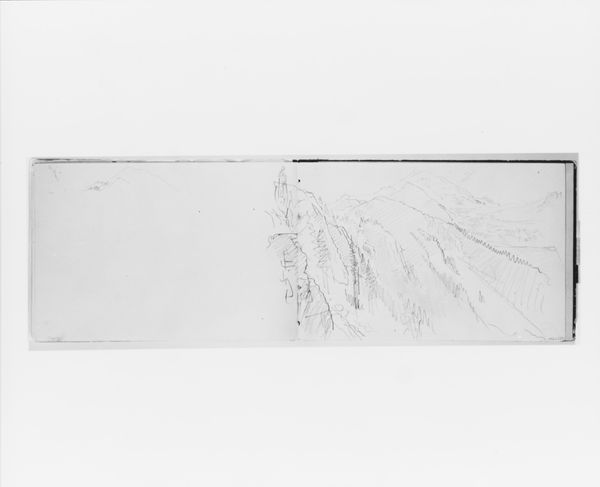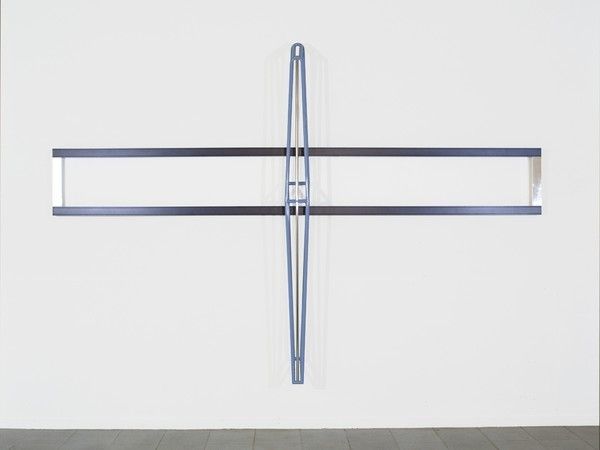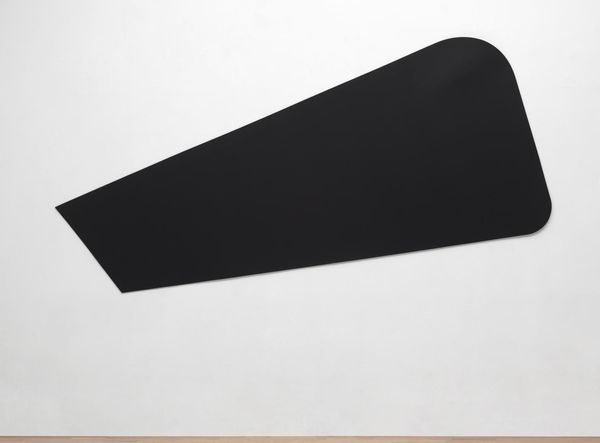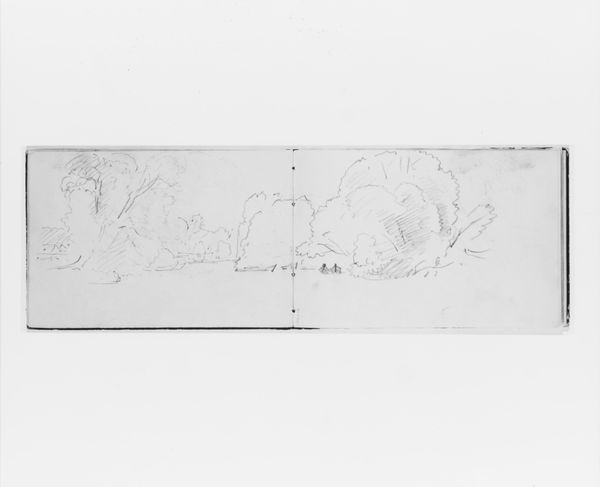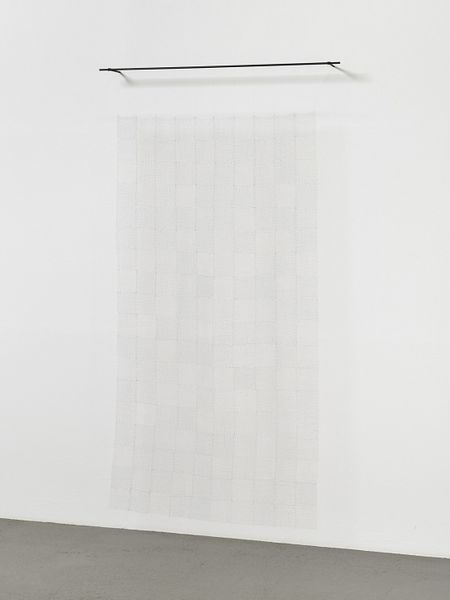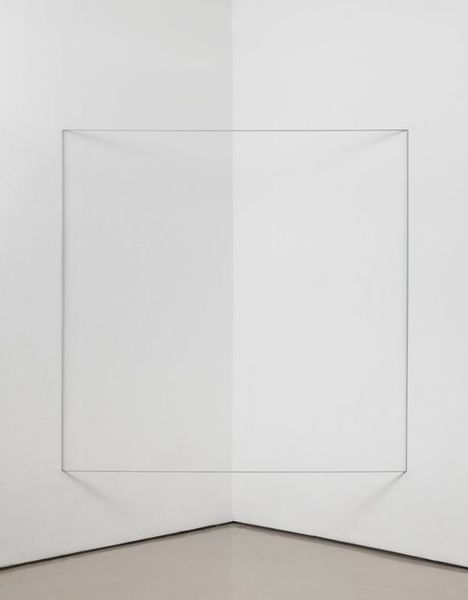
Dimensions: overall installed: 106.68 x 233.68 x 12.7 cm (42 x 92 x 5 in.) overall (box for glass): 59.7 x 92.7 x 26.7 cm (23 1/2 x 36 1/2 x 10 1/2 in.)
Copyright: National Gallery of Art: CC0 1.0
Editor: This is Christopher Wilmarth’s "Little Bent Memphis" created in 1971. It appears to be made of metal. The sculpture feels quite austere, with a strong emphasis on geometry. What can you tell me about how the structure contributes to its meaning? Curator: Well, let us observe closely. Notice how Wilmarth divides the composition into three distinct segments, yet links them via a linear progression. What effect does this have on your reading of the piece? Editor: It almost feels like different states of being, connected, but separate… Like a beginning, middle, and end laid out linearly. Curator: Precisely. And consider the properties of the materials he employs. The subtle transparency and industrial feel suggest a blending of vulnerability and strength. Observe how light interacts with the piece, creating subtle shifts in tone. It emphasizes its presence in space through reflection and shadow play. Does the placement of the vertical line strike you as intentional? Editor: Definitely! It adds a stark, vertical interruption to the otherwise horizontal flow. It seems to slice through the artwork and adds tension to the piece, especially compared to the softness of the rest of the sculpture. Curator: It's the singular linear element juxtaposed against the broader geometric forms, generating a visual dialogue. The sculpture eschews overt narrative and becomes about the spatial relationships of form. This pushes the boundaries of how a traditional sculpture communicates with an audience. Editor: I see how the work prompts us to contemplate its physical construction first, and consider broader narratives later. Curator: Indeed. Focusing on its tangible presence makes the artwork less about its title or intent and more about our phenomenological encounter with geometric forms and industrial materials. Editor: I understand the work better now, as I appreciate the deliberate construction. It definitely leans into formalism by showing the raw structure of the art piece and materials.
Comments
No comments
Be the first to comment and join the conversation on the ultimate creative platform.

